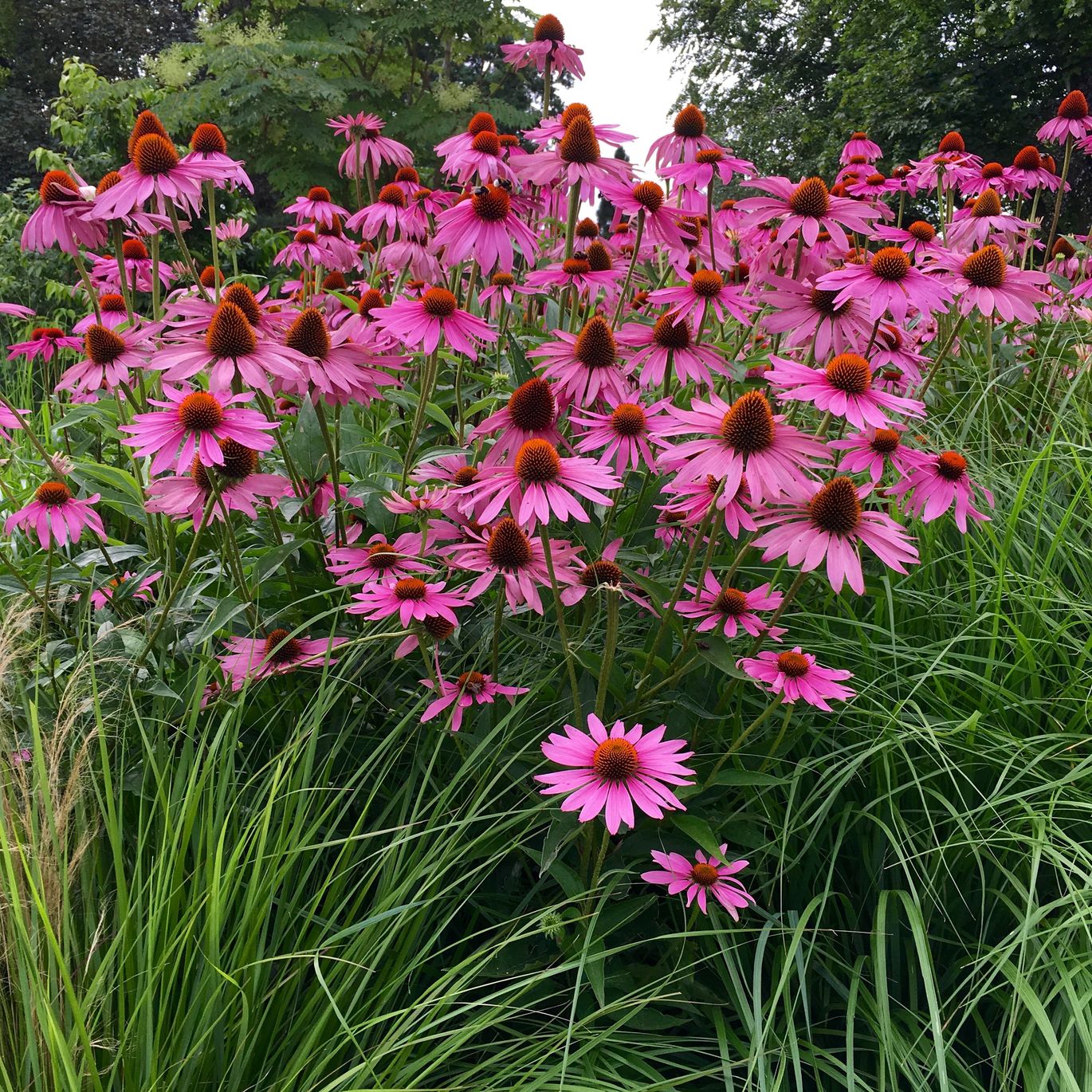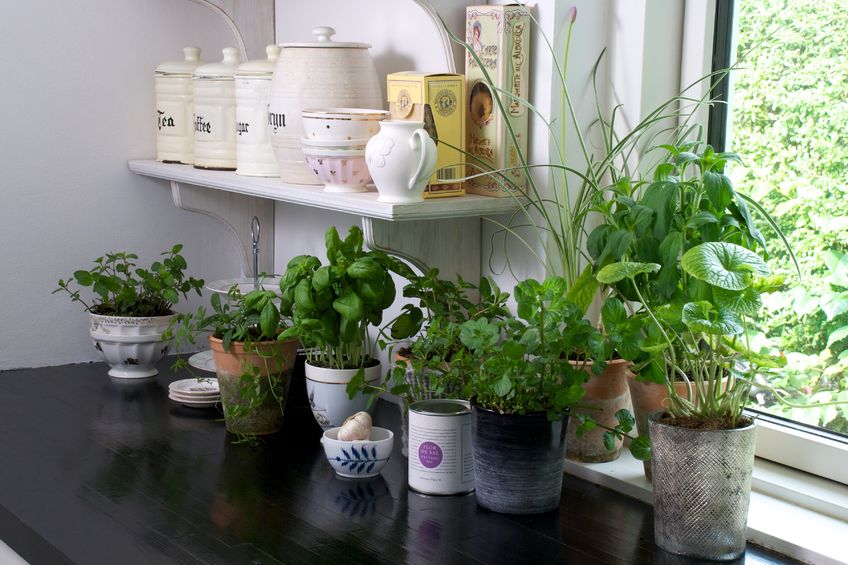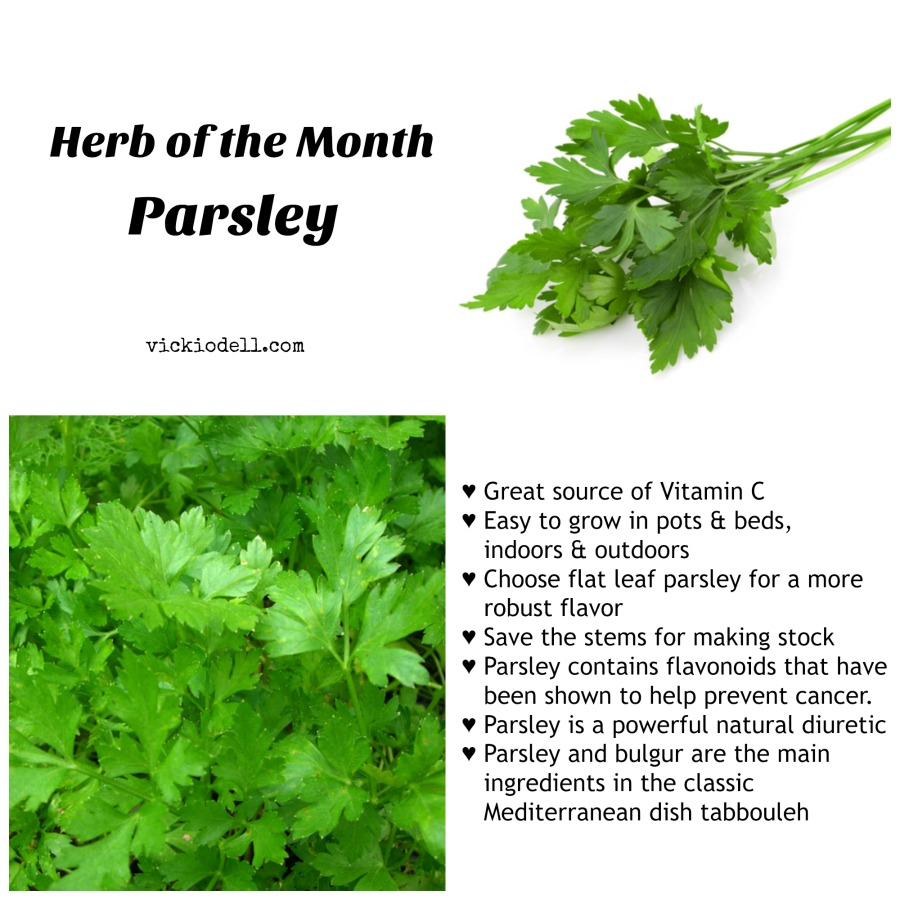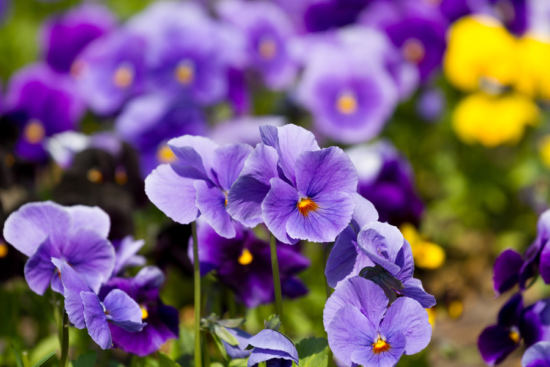
Herb of the Month – Violet
The common blue violet (Viola sororia, Violaceae) is native to most of central and eastern North America. It is a common sight in lawns, gardens, sidewalk cracks and along trailsides. To some, common blue violet is considered a “weed” because of its relative ease in adapting to human disturbance, but it has been on this continent for a very long time and may not technically be considered a weed.
Viola odorata is a creeping evergreen perrenial with heart-shaped, simple toothed leaves with basal arrangement and stems that rise up from an underground rhizomatic vine.
Some Viola species are perennial plants, some are annual plants, and a few are small shrubs. A large number of species, varieties and cultivars are grown in gardens for their ornamental flowers. The terms “viola” and “violet” are normally reserved for small-flowered annuals or perennials, where as the term “pansy” is normally used for those multi-colored, large-flowered cultivars which are raised annually or biennially from seed and used extensively in bedding.
Botanical names: Viola is a genus of flowering plants in the violet family Violaceae. It is the largest genus in the family, containing between 525 and 600 species.
Where it grows: Most species are found in the temperate Northern Hemisphere; however, some are also found in widely divergent areas such as Hawaii, Australasia, and the Andes.
Part used: Flowers and leaves but the roots of most violet species can cause nausea and vomiting, and should not be eaten.
Collection: The leaves and flowers can be harvested with scissors in a “haircut” style. Violet can be harvested multiple times throughout the spring until the leaves become too fibrous. It will often make a comeback in the fall, with a flush of tender new growth.
Main Actions: Violet leaves contain a good bit of soluble fiber, and are helpful in lowering cholesterol levels (similar to oatmeal). Soluble fiber is also helpful in restoring healthy populations of intestinal flora, as beneficial bacteria feed off of this type of fiber. The leaves are high in Vitamins A and C, and rutin. Rutin has been shown in animal and in vitro studies to be anti-oxidant, anti-inflammatory, and blood thinning. Many foods that are high in rutin, such as buckwheat (Fagopyrum esculentum), are eaten traditionally as a remedy for hemorrhoids and varicose veins.
Uses: When newly opened, Viola flowers may be used to decorate salads or soups. It may also be used in stuffings for poultry or fish. Soufflés, cream, and similar desserts can be flavored with essence of Viola flowers. The young leaves are edible raw or cooked as a somewhat bland leaf vegetable. The heart-shaped leaves provide a free source of greens throughout a long growing season.
Violet is cooling and moistening, and is used internally as a blood cleanser and lymphatic stimulant. It is taken as a tea or syrup, and can also be eaten for its medicine.
Violet has a rich tradition in Europe, where it has been used for centuries as a pulmonary remedy for dry hacking cough. Violet can also be used as a tonic for chronically swollen lymph nodes. As with many other herbs with an action on the lymphatic system, it has a long tradition of use in the treatment of cancer.
Topically, violet is used as a poultice, compress, infused oil and salve in the treatment of dry or chaffed skin, abrasions, insect bites, eczema, varicose veins and hemorrhoids. It is cooling, soothing and anti-inflammatory.
Combinations: Violet is often recommended for bronchitis and whooping cough, along with the roots of marshmallow (Althaea officinalis) and licorice (Glycyrrhiza glabra).
Preparation and dosage: The exact dosage is not especially important since it can safely be consumed in large quantities. As a gentle food herb, violet is generally safe for elders, youngsters, and people who are taking pharmaceuticals.
Violet Leaf Tea
You can start using violet leaves by making tea. Fresh herbs or dried may be used. A little can go a long way.
The easiest but less elegant way to brew tea is to put loose tea into a canning jar, add boiling water and allow it to steep to your desired strength, then strain the herbs. Usually 5-10 minutes of steeping is enough.
Candied violets are still made commercially in Toulouse, France, where they are known as violettes de Toulouse. They are used as decorating or included in aromatic desserts.
The French are also known for their violet syrup, most commonly made from an extract of violets. In the United States, this French violet syrup is used to make violet scones and marshmallows.
Safety: No side effects or drug interactions have been reported for violets. There are no reported risks for pregnancy or lactation that are noted (Brinker, 2010).
Caution: The roots of most violet species can cause nausea and vomiting, and should not be eaten.
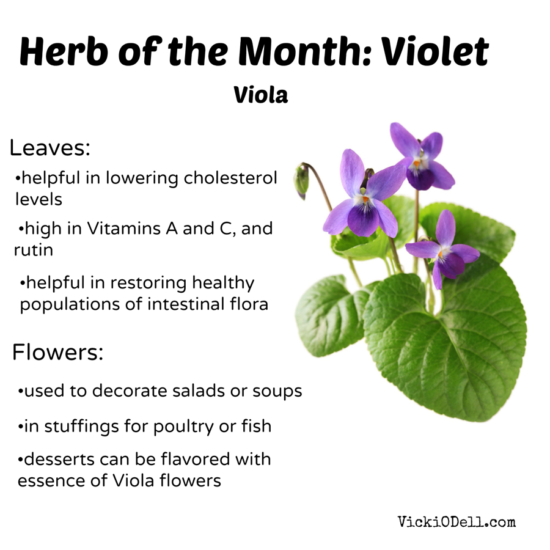
*We recommend that you consult with a qualified healthcare practitioner before using herbal products, particularly if you are pregnant, nursing, or on any medications.
*This statement has not been evaluated by the Food and Drug Administration. This product is not intended to diagnose, treat, cure, or prevent any disease. For educational purposes only.
